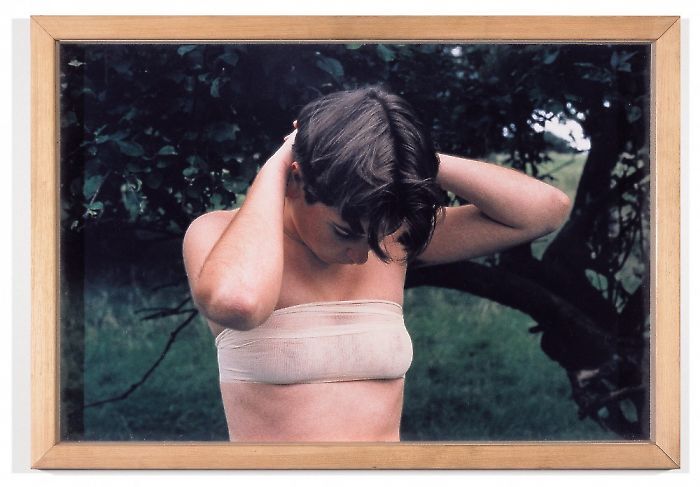—
Collier Schorr
It is interesting, that the “destruction of pleasure” is sometimes cited in relation to earlier feminism. I never thought that women in the 1970s movements were rejecting pleasure—rather, they were claiming authorship of it. Of course, this is the perspective of someone who grew up reading her mother’s copies of Ms. Magazine. […] For me, feminism has often been the by-product of a heterosexual constitution. As excited as I was by late 1980s and early 1990s postfeminism and French theory, as applied to the work of Barbara Kruger and Laurie Simmons and others, these arguments were situated in a dialogue with men. At that point, you began to see a schism between the goals of a more homogeneous feminism and the ideologies of queer theory. In fact, queer theory, which includes the possibility of changing one’s gender through grammar (i.e., a woman sees herself as a man, so she calls herself a man, a “he”), could hardly be seen as celebratory of femininity when it offers a clear desire for masculine privilege. […]
With Cindy Sherman, an artist I have always admired, we have a body of work that exudes criticality from every adroit gaze; […] Sherman’s work is successful because it retains illustrative powers while simultaneously serving as a celebration of every feminine stereotype. In fact, still photography is the most problematic of the mediums, because it is the eternal pause—and, to paraphrase Stevie Smith, one often can’t tell the difference between someone waving and someone drowning.
Ambiguity is a luxury. With every piece I make, I am aware that my feminism may be difficult to detect. This bothered me for some time—the idea that I might make work that seems to deny a female presence. And I cannot say I’ve resolved this; perhaps, like Kara Walker, I find myself swimming in the fantasy of the crisis. But, in this vein, I have thought a great deal about Richard Prince’s work, which has linked a crisis within masculinity to that within feminity. I lived for a time with his Spiritual America (1983), the portrait of the prepubescent Brooke Shields: The success of that piece is as a critical commentary about representation and the feminine body in photography and about the look and shape of desire. The secret surprise within that photograph was that its appropriation allowed it to exist. We could look at the image not as it was originally—a pornographic picture of a child made with an ambiguous mother’s permission—but as a critique. For me, an important facet of understanding the picture was to look at the idea of masculine desire mediated by historical feminism and 1980s postfeminism. Living with this glistening and truly disturbing photograph gave me the opportunity to examine my own desirous gaze. Was it different from the author’s because of gender differences, or was it similar because we both were attracted to women?
Collier Schorr, in: Artforum, Oct. 2003, p.145
Inquiry
Please leave your message below.





